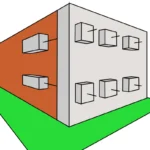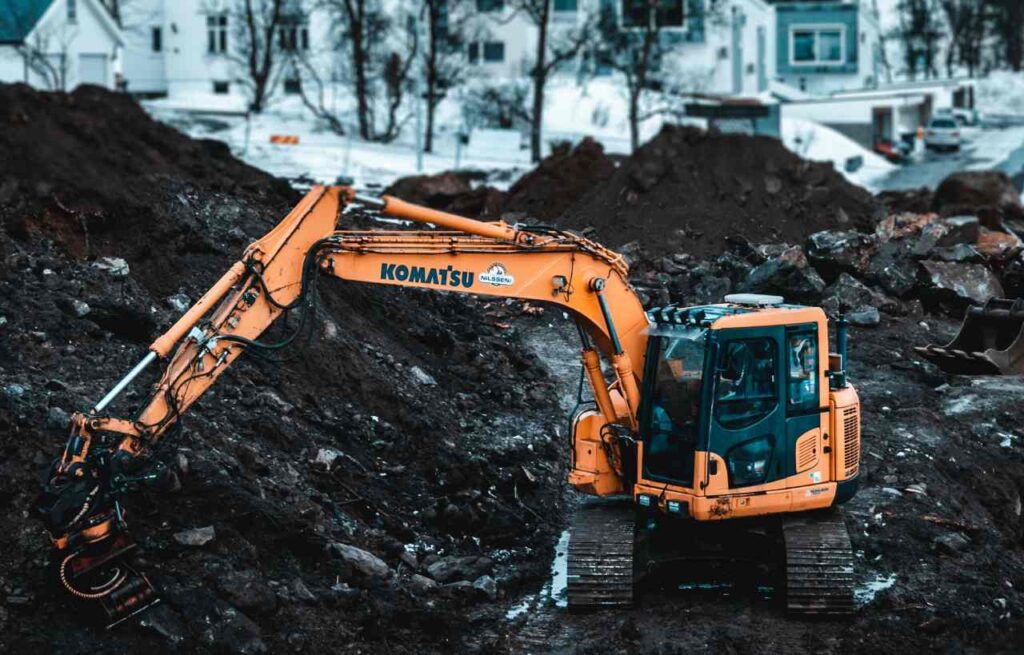What is earthwork?
Earthwork in civil engineering involves a series of fundamental activities carried out to prepare and adapt the land on which a civil project will be built. This preparation can be done in two ways: manually, using tools like pickaxes and shovels, or mechanically, using specialized machinery.
It is a critical process in the planning and execution of any construction project, whether for excavation, embankment, fill, or other related operations. When conducting a detailed and cost-effective analysis of this phase, various factors must be considered, such as soil density, compaction level, the type of material present, and its expansibility.
Earthwork constitutes one of the initial stages in the construction of any type of infrastructure. It involves a set of activities that include the excavation and removal of soil materials down to a depth of 1.20 meters, which corresponds to the limit of free hauling. These materials come from the areas that require excavation, as indicated in the project’s plans and cross-sections or the instructions provided by the Supervisor.
In addition to excavating and removing soil, the removal of the vegetative layer and other soft, organic, and potentially harmful materials in areas where embankments for roads or other structures will be constructed should also be considered. The common unit of measurement used to quantify earthwork is the cubic meter.
Steps for Earthwork
- Site Clearance and Vegetation Removal
Before starting excavation, an intervention is carried out on the land surface to clear it of bushes, plants, trees, and existing debris.
- Layout
In this stage, the location of ramps for truck entry and exit is established, and the working area is delimited using external reference points that provide topographic information.
- Excavation
The excavation phase can be done manually using tools like pickaxes and shovels or mechanically using specialized machinery. This excavation stage can be classified into three categories:
– Cut: This refers to earthwork above the starting plane, meaning when soil or rock needs to be removed to achieve the desired ground level.
– Fill: This category applies when the construction plane is below the current ground level. In this case, soil layers must be removed to reach the required depth for the project.
– Embankment: In situations where the ground level is lower than the desired level, it is necessary to increase the ground height through controlled material addition to reach the design elevation.
What is needed for earthwork?
To carry out earthwork and necessary excavations, heavy machinery is typically required, although this depends on the scale of the earthwork and the volume of soil to be removed during excavation. For smaller volumes, manual labor and supporting tools such as shovels and carts can be used.

Why is earthwork important?
Earthwork is a highly important process, and proper planning and execution are fundamental for the success and efficiency of any construction project. By employing suitable techniques and specialized machinery, the goal is to optimize the time and resources used in this phase, ensuring proper ground preparation for the civil project.
How are earthworks classified?
In the field of civil engineering, excavations are a crucial phase in infrastructure construction and can be classified in various ways based on different criteria. Among them, the following classifications exist:
1. Excavations by Material Type
– Earth Excavation: Involves the removal of the soil layer immediately below the vegetative layer and above the bedrock. This type of excavation is commonly used for embankments and foundations. It is generally straightforward to handle and can be efficiently carried out using excavators or other machinery.
– Rock Excavation: Refers to the removal of rock formations that cannot be directly excavated but require the use of drilling and systematic blasting for removal.
– Slush Excavation: Involves handling material with excessive water and undesirable soil content. Due to its lack of load-bearing capacity, slush is rarely used as fill material in civil projects.
– Unclassified Excavation: Involves the movement of a combination of vegetative layer, soil, rock, and slush without a specific classification.
2. Excavations by Shape
– Trench or Ditch Excavation: Corresponds to a type of channel with a minimum depth of 40 centimeters, designed to accommodate retaining walls.
– Full-Width Excavation: Refers to earthwork across the entire surface to be constructed, with a depth determined by basements or cellars in buildings.
– Pit Excavation: Involves earthwork at significantly greater depths than surface excavation. This type of excavation is carried out for the construction of pile foundations, caissons, or the search for underground water springs.
– Tunnel Excavation: Requires shoring or bracing as excavation progresses. Shoring is done by horizontally placing boards supported by well-fixed struts or cross-braces.
– Excavation for Retaining Walls or Cuts: In cases where the ground is sloping, cuts and necessary slopes are made to achieve the defined floor levels on the plans.
3. Excavations by Method
– Manual Excavation: Used for small volumes and shallow depths, such as isolated footing excavations. In firm ground, cuts will be vertical, while in loose soil, inclined cuts will be made to ensure stability without the need for shoring, whenever possible. In muddy or unstable ground, proper shoring of walls is essential as excavation proceeds. Even in firm ground, shoring may be justified when excavations exceed one meter in depth, aiming to avoid the excavation of slopes. The excavated soil must be deposited at a minimum distance of one meter from the trench edge while it is being removed from the site.
– Machine Excavation: Carried out for large volumes or depths exceeding 2 meters, justifying the use of heavy machinery. For fine-tuning cuts and completing excavations where machines cannot operate, supplementary manual work is performed.
4. Excavations by Work Type
– Stripping or Cutting: Involves the movement of any material from the original surface to the top of any material suitable for use in a permanent embankment.
– Roadway Excavation: Corresponds to the cut part of a road cut that starts where the stripping ends and finishes at the line of the finished subgrade or the bottom of the base layer.
– Channel Excavation: Refers to the realignment or relocation of a stream or watercourse, typically along a right of way.
– Foundation Excavation: Carried out for the construction of building foundations, piles, walls, and footings. Excavation depths are defined based on soil studies and can be performed using manual or mechanical means.
– Underground Tank Excavation: These excavations are carried out to the required depth for the respective work, leaving space for concrete flooring. Walls must have slopes that ensure stability and protection against rainwater damage, using a 5-centimeter-thick layer of cement and sand on the surface and a bottom protected with a 5-centimeter-thick concrete layer.
– Septic Tank Excavation: Trenches and excavations for septic tanks should be made to the depth specified in the plans and with the necessary width for proper tank construction. Vertical walls are recommended whenever possible, and proper shoring should be done in case of need to prevent collapses. The trench bottom must be compacted properly to provide the best soil support and ensure that the pipe rests evenly on its bottom quadrant.
– Borrow Material Excavation: Involves obtaining material for embankments or fills from a source other than the excavation itself.
– Bridge Excavation: Refers to the movement of material encountered during the excavation of foundations and abutments of bridges. Bridge excavation is often classified as wet, dry, or rock excavation.
– Drainage Excavation: Involves the movement of material encountered during the installation of drainage structures, such as sewer pipes. After installing the sewer pipe, filling must be done with suitable material, often obtained from a source other than the excavation. Trenches and excavations for sewer pipes and electrical ducts must be made to the depth specified in the plans and with the necessary width for proper duct installation. Trench walls should be vertical whenever possible, and proper shoring must be done when necessary to prevent collapses. The trench bottom for pipe trenches must be properly compacted to provide the best soil support, and the support area should be shaped according to the pipe’s form to ensure even support on its lower quadrant.
Conclusion
Excavations are an essential part of any civil engineering project, and their proper classification and planning are crucial to ensuring the stability and success of the works. Choosing the right type of excavation, appropriate machinery and method, as well as considering geotechnical and topographic factors, are key aspects for achieving an optimal and safe result in the construction of any infrastructure.
References
– “Earthwork Engineering Manual for Civil Engineers” by John W. Cross
– “Principles of Earthwork” by Thomas H. Sanders
– “Earthwork in Civil Engineering” by Miguel Ángel Hernández
– “Earthwork: A Guide for Civil Engineers” by James J. O’Brien
– Web source: Construmatica.
About The Author
Samuel Parariá
Estudio: University of Francisco de Paula Santander.
Major: Civil Engineering.
Favorite Areas: Structures, Traffic Engineering, and Road Design.
Location: Cúcuta, Norte de Santander, Colombia.







Related
Gravity Retaining Walls
What are Anchored Retaining Walls?
Methods for Paver Calculation – Civil Engineering